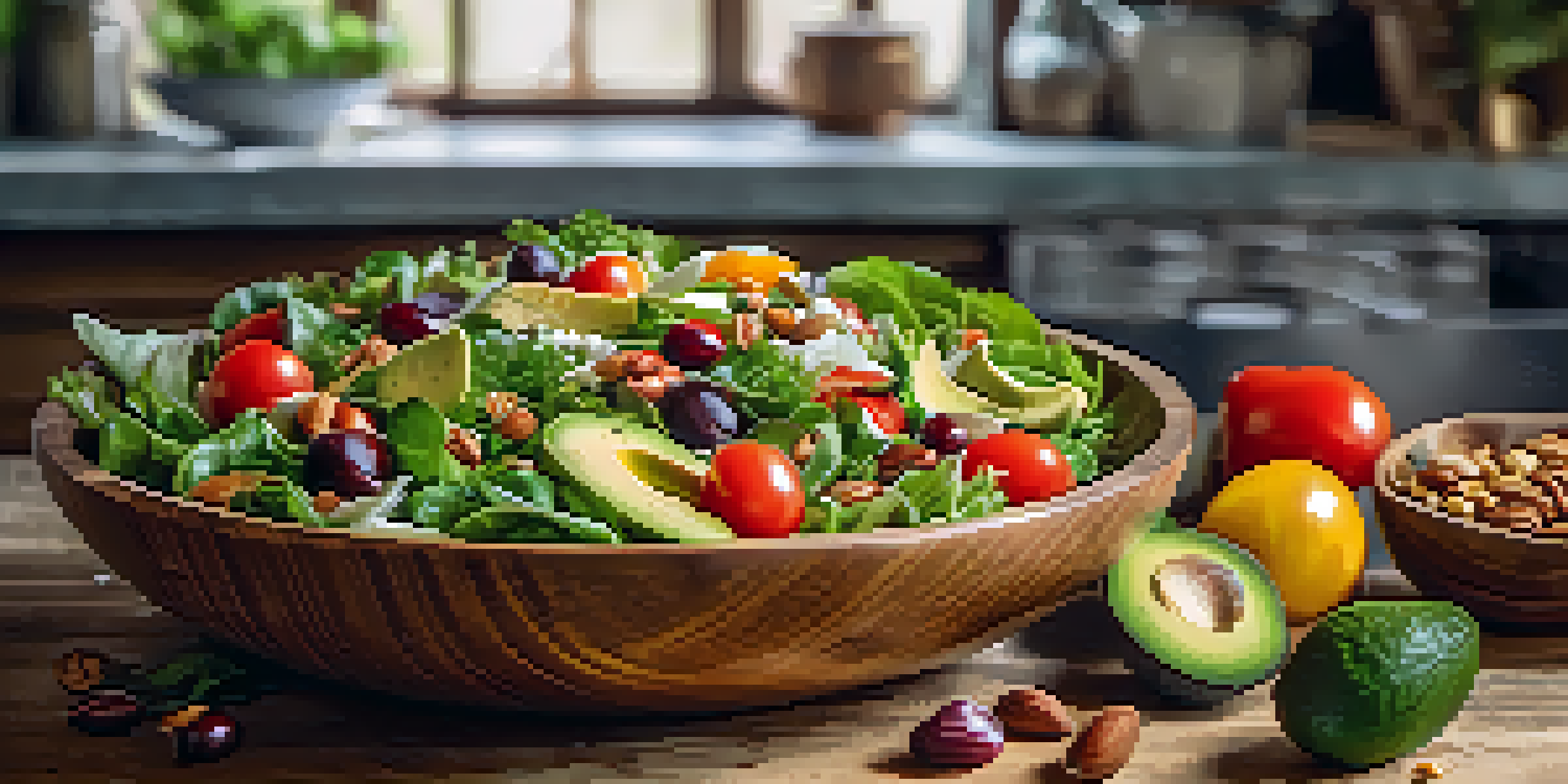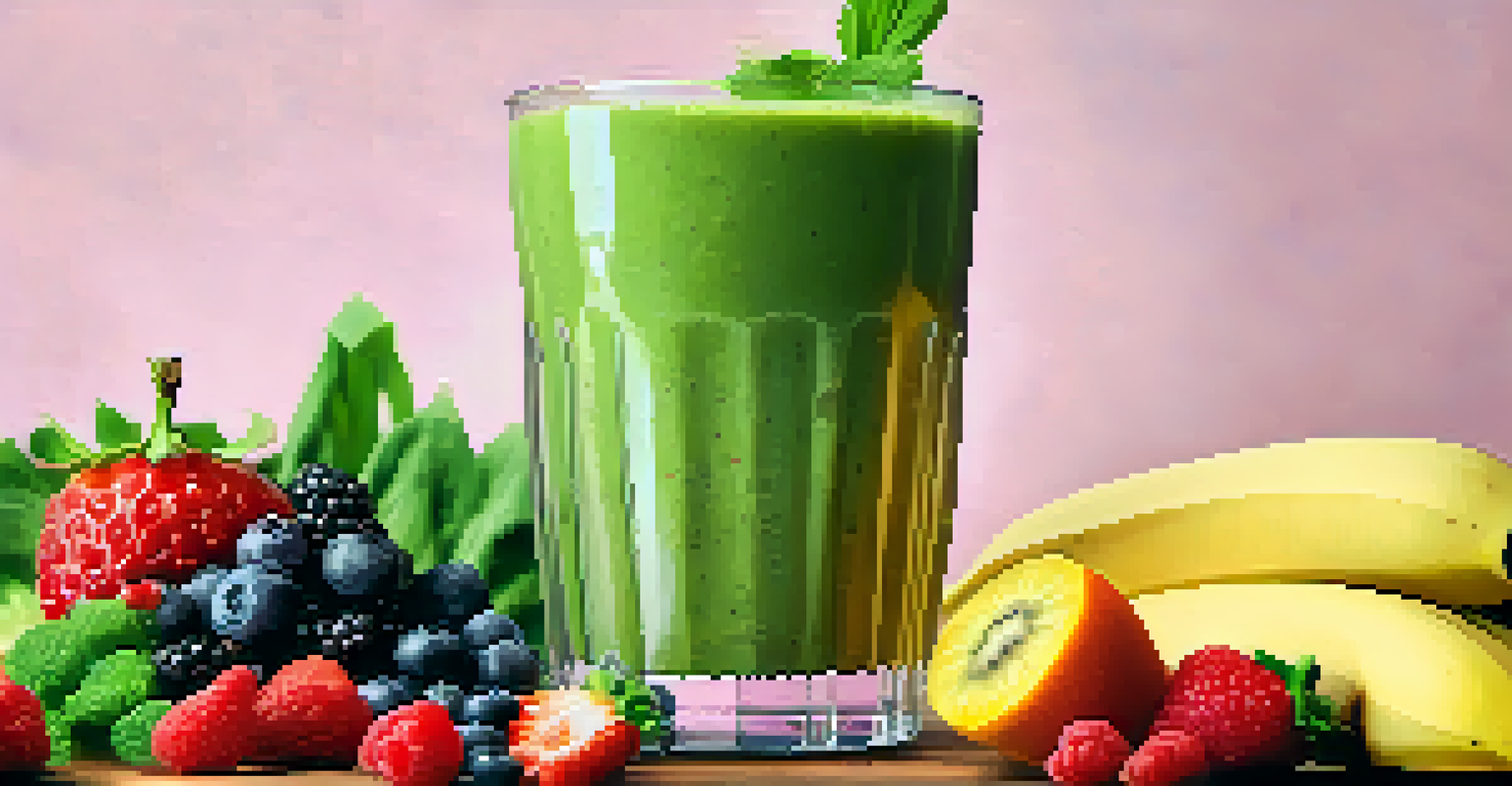Raw Foods and Their Role in Balancing Cortisol Levels

Understanding Cortisol and Its Importance
Cortisol, often referred to as the stress hormone, plays a vital role in our body’s response to stress. It helps regulate metabolism, immune response, and blood pressure, making it an essential hormone for overall health. However, chronic elevated cortisol levels can lead to various health issues, including anxiety and weight gain.
Let food be thy medicine and medicine be thy food.
When we experience stress, cortisol levels spike, preparing our body to react swiftly. This response is historically known as the 'fight or flight' mechanism. While this reaction is necessary for survival, continuous high levels of cortisol can wreak havoc on our bodies, leading to fatigue, irritability, and other physical complications.
To combat high cortisol levels, lifestyle choices become crucial. Incorporating raw foods into your diet is one effective strategy to help balance these hormone levels naturally.
What Are Raw Foods and Their Benefits?
Raw foods are primarily unprocessed and uncooked, including fruits, vegetables, nuts, and seeds. This approach to eating emphasizes whole foods that retain their natural enzymes, vitamins, and minerals. The idea is that cooking can destroy some of these vital nutrients, making raw foods a more healthful choice.

Eating raw foods can lead to increased energy levels, improved digestion, and better hydration. Many raw foods are rich in antioxidants and phytonutrients, which help combat oxidative stress in the body. This is particularly important for managing cortisol, as oxidative stress can elevate hormone levels further.
Cortisol's Role in Health
Cortisol, known as the stress hormone, is crucial for regulating metabolism and immune response, but chronic high levels can lead to health issues.
Moreover, raw foods often contain high water content, which can aid in hydration. Proper hydration is essential for maintaining balanced cortisol levels and overall bodily functions.
How Raw Foods Impact Cortisol Levels
Research suggests that diets rich in fruits and vegetables can help lower cortisol levels. Raw foods are packed with nutrients that support adrenal health, which is where cortisol is produced. By providing your body with the right nutrients, you can promote a more balanced hormonal environment.
The food you eat can either be the safest and most powerful form of medicine or the slowest form of poison.
Incorporating raw foods into your diet helps ensure you receive essential vitamins such as B vitamins, which play a critical role in energy production and stress management. Foods like avocados and spinach can help replenish nutrients that might be depleted during stressful times.
Additionally, the fiber content in raw foods supports gut health, which is linked to mood regulation and stress response. A healthy gut can lead to lower cortisol levels, making raw foods a beneficial choice in managing stress.
Best Raw Foods for Cortisol Management
Certain raw foods stand out for their ability to help manage cortisol levels effectively. Leafy greens like kale and spinach are excellent for their high nutrient density. Fruits such as berries and bananas can also provide quick energy and essential vitamins that support adrenal function.
Nuts and seeds, especially walnuts and flaxseeds, are great sources of omega-3 fatty acids, which have been shown to reduce inflammation and stress in the body. These healthy fats can help stabilize cortisol levels when included in a balanced raw diet.
Benefits of Raw Foods
Raw foods, rich in nutrients and enzymes, support energy levels, digestion, and hydration, making them beneficial for managing stress and cortisol.
Moreover, incorporating foods rich in magnesium, like raw cacao and almonds, can help alleviate stress. Magnesium plays a crucial role in regulating cortisol and promoting relaxation, making these foods particularly beneficial for those looking to balance their hormone levels.
Incorporating Raw Foods into Your Diet
Transitioning to a raw food diet can be simple and enjoyable. Start by incorporating more raw fruits and vegetables into your meals. Smoothies are a fantastic way to blend multiple raw ingredients, allowing you to enjoy their benefits in a delicious format.
You can also explore raw salads, which can be made exciting with various dressings and toppings. Try experimenting with different combinations of raw foods to find what you enjoy the most. Including a variety of colors on your plate not only makes meals visually appealing but also ensures a broad spectrum of nutrients.
Additionally, consider setting aside a day each week to prepare your raw meals in advance. This approach can help you stay committed to your new eating habits and make it easier to grab healthy options on busy days.
Potential Challenges of a Raw Food Diet
While raw foods offer numerous benefits, transitioning to this diet may present some challenges. Some people may initially find it difficult to consume enough calories, as raw foods can be less calorie-dense than cooked options. It's important to plan your meals to ensure you're getting enough energy throughout the day.
Another consideration is that certain individuals might experience digestive discomfort when consuming large amounts of raw foods. This can often be mitigated by gradually increasing your intake and allowing your body to adjust to the higher fiber content.
Incorporating Raw Foods Easily
Transitioning to a raw food diet can be simple by gradually adding more fruits and vegetables, exploring creative recipes, and meal prepping.
Lastly, it's essential to ensure a balanced intake of nutrients. Consulting with a nutritionist can help you create a well-rounded raw food plan that supports your health goals while addressing any potential deficiencies.
Conclusion: The Path to Better Health
In conclusion, raw foods can play a significant role in balancing cortisol levels and promoting overall well-being. By choosing nutrient-dense, unprocessed foods, you can support your body’s natural stress management systems, leading to improved health outcomes.
As you incorporate more raw foods into your meals, remember that balance and variety are key. Explore different recipes and combinations to find what works best for you, and pay attention to how your body responds.

Ultimately, the journey to better health is a personal one. With the right knowledge and choices, you can harness the power of raw foods to support your mental and physical health effectively.